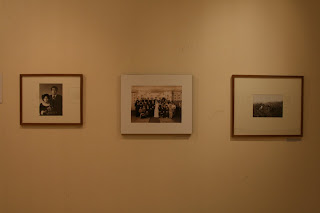
The May 18 Memorial Foundation is a non-profit organization established on August 30th, 1994 by the surviving victims of the 1980 Gwangju Uprising, the victims families, and the citizens of Gwangju. The foundation aims to commemorate as well as continue the spirit of struggle and solidarity of the May 18 Uprising; to contribute to the peaceful reunification of Korea; and to work towards peace and human rights throughout the world. Since its establishment, the foundation has carried out numerous projects in various fields, including organizing memorial events, establishing scholarships, fostering research, disseminating information to the public, publishing relevant materials, dispensing charity and welfare benefits, building international solidarity, and awarding the Gwangju Prize for Human Rights.
One of the memorial events is organizing the May 18 Memorial Exhibition around the cities in South Korea. Every year the place and the time are different. In the case of the month of May, the exhibition is always conducted in Gwangju (the 518 gallery). For this year, the Culture and Solidarity Team of the May 18 Memorial Foundation organized the May 18 Memorial Exhibition in 3 places which are:
1. Gwangju, from May 15 – 25, 2008
2. Jeonju, from June 5 – 18, 2008
3. Busan, from September 5 – 25, 2008
There are 2 types of support which the foundation provides in organizing these exhibitions, namely:
1. The foundation funds all of the expenses of the exhibition.
2. The foundation is funding half of the expenses of the exhibition.
For this year’s exhibition, the foundation is funding all the expenses of the exhibition (type 1).
One of the memorial events is organizing the May 18 Memorial Exhibition around the cities in South Korea. Every year the place and the time are different. In the case of the month of May, the exhibition is always conducted in Gwangju (the 518 gallery). For this year, the Culture and Solidarity Team of the May 18 Memorial Foundation organized the May 18 Memorial Exhibition in 3 places which are:
1. Gwangju, from May 15 – 25, 2008
2. Jeonju, from June 5 – 18, 2008
3. Busan, from September 5 – 25, 2008
There are 2 types of support which the foundation provides in organizing these exhibitions, namely:
1. The foundation funds all of the expenses of the exhibition.
2. The foundation is funding half of the expenses of the exhibition.
For this year’s exhibition, the foundation is funding all the expenses of the exhibition (type 1).
On June 5, 2008 at 5 PM the opening ceremony was held for the exhibition in Jeonju. The exhibition was held at the 2nd floor of Sori 21 Art Gallery. On the 1st floor there is another exhibition with the same related theme. Every year the exhibition are different kind of creations but the theme is always the May 18 Gwangju Democratic Uprising. Everyone look and appraises the Uprising in different aspects. Also, the foundation organized the exhibition with different creation so the people can enjoy and feel it in many ways.


On 2007, there were 2 themes which were:
1. Look at the new of the May 18 Uprising. It was discovery of the May 18 Gwangju Democratic Uprising.
2. The Cartoons. The foundation gave opportunity for young artists to create using the May 18 Gwangju Democratic Uprising as a theme.
This year the theme of the exhibition is a little bit different. The Foundation made used of the archive of pictures. The exhibition was the pictures of the victims before the Uprising. On the pictures, the people look happy. Some of the photos were takes with their families or friends.
1. Look at the new of the May 18 Uprising. It was discovery of the May 18 Gwangju Democratic Uprising.
2. The Cartoons. The foundation gave opportunity for young artists to create using the May 18 Gwangju Democratic Uprising as a theme.
This year the theme of the exhibition is a little bit different. The Foundation made used of the archive of pictures. The exhibition was the pictures of the victims before the Uprising. On the pictures, the people look happy. Some of the photos were takes with their families or friends.







The exhibition is talking about the human, they have their own life, friends, and families. When the Uprising happened, they could not take pictures because the situation was very dangerous. The memory left for the victims’ families were the last pictures that they took before the Uprising.
The foundation collected the pictures from the victims’ families. The pictures left were not so many, the families mostly burned them because they want to throw the sad memory. The pictures, reminds them of their loved ones who died in the Uprising that makes them feel sad.
During the opening ceremony, there was a performance. There was 1 artist. He performed his creation in front of the visitors. His performances took around 30 minutes. The theme of the performance was the rice. As we know that rice is an important for symbol Asian countries. He used different kinds of rice (look at the follow pictures). After the performances, there were some reception words.









After the opening ceremony, the visitors looked around the exhibition. The organizers also prepared snack and drink. The opening ceremony finished at around 7 PM.

Some of the citizens in Gwangju and South Korea look The May 18 Gwangju Democratic Uprising just as a history. With the exhibition, the foundation aims for the people who lives after the Uprising to look, hear, and feel the history. History not just history per se, but history that now was great influence in their lives.
links:










